The public health field is constantly evolving, with new technologies and innovations emerging that have the potential to transform the way we work. One such technology that is rapidly gaining traction is artificial intelligence (AI) for public health. In this post, we’ll dive into several real-world examples of how AI-powered tools can streamline routine tasks, boost productivity, and free up more time for the meaningful, high-impact work of public health. Whether you’re analyzing data, drafting reports, or simply trying to stay on top of your inbox, AI for public health could be the key to unlocking new levels of efficiency and effectiveness.
In this blog post, we are going to focus on leveraging AI for your “personal” workflows, meaning some of the work that you individually touch each day. We are not going to be discussing big system-wide changes but rather provide clear prompts that you can use to integrate AI for public health work that you do daily.
Table of Contents
Considerations and Cautions of AI in Public Hea;th
When incorporating AI into your public health workflows, it’s important to keep the following in mind:
- Adhere to your organization’s workplace policies around the use of AI and other technologies (if your organization is considering an AI policy, we would love to chat with you!)
- Exercise caution when transmitting data to cloud-based AI platforms, ensuring the protection of sensitive information.
- Maintain the privacy and security of protected health information and personal data.
- Obtain consent from any parties whose information or content may be utilized by the AI system.
What is a Large Language Model?
At the core of many AI-powered applications are large language models—advanced artificial intelligence systems trained on massive amounts of text data from the Internet, books, and other sources. These models learn the patterns and relationships in language use, allowing them to understand, interpret, and generate human-like text when given a prompt or query.
Large language models go beyond simply retrieving pre-written information. They can construct new, original responses by drawing on the knowledge and insights they’ve gained through their training. This makes them a powerful tool for tasks like answering questions, summarizing information, and even assisting with creative writing.
Exploring Different Large Language Models
There are many large language models available on the market. Most have robust free plans, but the depth of responses tends to improve with the paid plans.
- Claude: An AI assistant developed by Anthropic, Claude is known for its strong language understanding, ability to tackle complex queries, and flexible integration options.
- ChatGPT: Created by OpenAI, ChatGPT is a widely popular large language model that can engage in human-like conversations, answer follow-up questions, and even write code.
- Google Gemini: Part of Google’s suite of AI technologies, Gemini is a large language model focused on enhancing search, query understanding, and information retrieval.
Prompts for Leveraging AI for Public Health
In the sections that follow, we’ll outline a few specific examples of how you can leverage the power of AI for public health for your public health workflows. These use cases will demonstrate the versatility of large language models and the efficiency gains they can unlock for local health department professionals.
The key to unlocking the full potential of AI for public health tasks lies in the strategic use of prompts – carefully crafted instructions that guide the language model to deliver the desired output. We’ll provide you with sample prompts that have proven effective in our own work, giving you a solid starting point to experiment with AI-powered tools in your day-to-day public health responsibilities.
Whether you’re automating repetitive data analysis in Excel, streamlining complex coding projects, or enhancing the clarity and professionalism of your written communications, these AI-powered solutions can help you work smarter, not harder. By integrating large language models into your personal workflows, you’ll be able to free up valuable time and mental energy, allowing you to focus on the high-impact, mission-critical tasks that drive progress in your local public health department.
Prompt Example: Automating Excel Formulas
One common task public health professionals often face is analyzing data in spreadsheets. Let’s say you have a dataset containing the names of local organizations, and you need to quickly determine which ones have the word “health” in their name, regardless of capitalization. Rather than manually scanning through the list, you can leverage the power of AI for public health by using a large language model to create the necessary Excel formula for you.
“I have data in C2 that contains the name of an organization. I need to determine if the organization’s name has “health” in it (case insensitive). Please write a formula for me with a yes/no response.”
By providing this prompt to an AI assistant, you can get a custom-tailored Excel formula that will automate this analysis, saving you time and effort. The benefit here by having the formula written for you in Excel is that you are not providing the data to a large language model, and you still control it. This is just one example of how AI for public health can be integrated into your personal workflows to boost efficiency and productivity.
Prompt Example: Streamlining Coding Tasks
Another area where AI can be hugely beneficial is in the realm of data analysis and visualization. Imagine you have a dataset on syphilis cases in your community, spanning 25 years and including details like ID, zip code, date, test result, location, age, and sex. You need to create a scatter plot showing the trends of positive cases in minors (under 18) over time.
“I have data on syphilis cases in my community located at [filepath.csv]. The data goes back 25 years and contains ID, Zip, Date, Result, Test Location, Age, and Sex. Please generate full code that will create a scatter plot of positive cases (Result = Positive) in minors (Age < 18) by year. Please write this using the programming language R.”
In this prompt, you are not giving the AI the data. Rather, you describe the data and inform them of the file path so that your code, when run locally, can read the file. By providing this prompt, an AI assistant can generate the complete code needed to analyze the data and generate the desired visualization, freeing you up to focus on interpreting the results rather than writing the underlying programming.
Prompt Example: Enhancing Writing and Communication
AI can also be leveraged to improve your written communication, whether it’s crafting a professional email, drafting a report, or even adjusting the tone of a message. For example, let’s say you’re working on a Community Health Assessment and need help getting past writer’s block.
“I am writing a Community Health Assessment Report for my community and I need help getting over writer’s block. I am going to give you some bullet points that I have written, and I would like for you to help transform this into a written report. The writing should be professional and clear. It should be at a 9th grade reading level. It should use about 5-8 sentences in a paragraph. You should not make anything up. This should be grammatically correct. The average lay person should be able to read this.”
To further help getting over writers block you can use a tool like Voice In (a Chrome Extension) or Otter.ai (referral link) which will transcribe your speech into text. You can then feed this speech into an AI to get you started with writing.
You can get a polished, well-written section that captures your intended message by providing your AI assistant with the outline and parameters.
Lunch & Learn: Dive Deeper into AI for Public Health
Are you interested in exploring how AI can be integrated into your health department’s workflows and processes? We’d be happy to schedule a dedicated lunch and learn session with your team. During this interactive session, we’ll dive deeper into real-world examples, discuss best practices, and work together to identify opportunities for AI-powered efficiencies within your organization.
Schedule a meeting with us today to get the ball rolling. We look forward to connecting and helping you unlock the full potential of AI for your public health initiatives.
Join Us for Future Conversations
If you’re interested in learning more about how AI and other technologies can enhance your public health work, we invite you to join us for an upcoming Flourish and Thrive Labs Coffee and Connect session. These monthly gatherings are a fantastic opportunity to connect with peers, share insights, and explore innovative solutions for the public health field.
We look forward to seeing you there!

